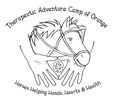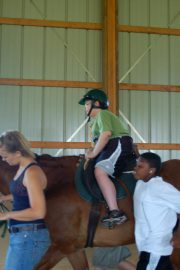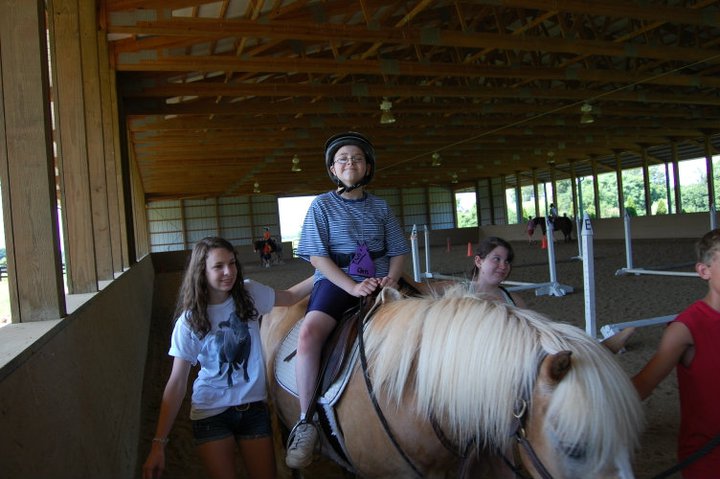Benefits of Therapeutic Riding
|
Therapeutic horse riding, also known as an Equine Assisted Activity, or ” Adaptive Riding” is for individuals with a range of physical, emotional, cognitive, and social disabilities. There are several different kinds of programs that utilize horses and horse riding for recreational benefits. Equine Assisted Activities are especially targeted for persons with disabilities.
Therapeutic Riding gives the rider a different, some times more enjoyable outlet to therapy then the normal Physical and Occupational therapy that most children and adults go through. Therapeutic Riding benefit children and adults with disabilities such as-
Learning on horse back is fun! Most of the time, children do not even realize that they are learning something other then how to ride the horse. The rhythmic, repetitive movement of the horse mimics the natural movement that people use as they walk. Using this movement on top of a horse naturally turns a persons hips and pelvis to sit up straight and move in a rolling motion as if they were walking on the ground them selves. Using horses in therapy can help improve more then just mobility and balance, it can help-
The first photo is of a camper in 2009, this was his first year of camp and he was scared of horses and very timid. The second picture is of the same camper 3 years later. As you can tell, he has greatly improved and succeeded in TACO!
|
Content copyright 2012. Therapeutic Adventure Camp of Orange. All rights reserved



